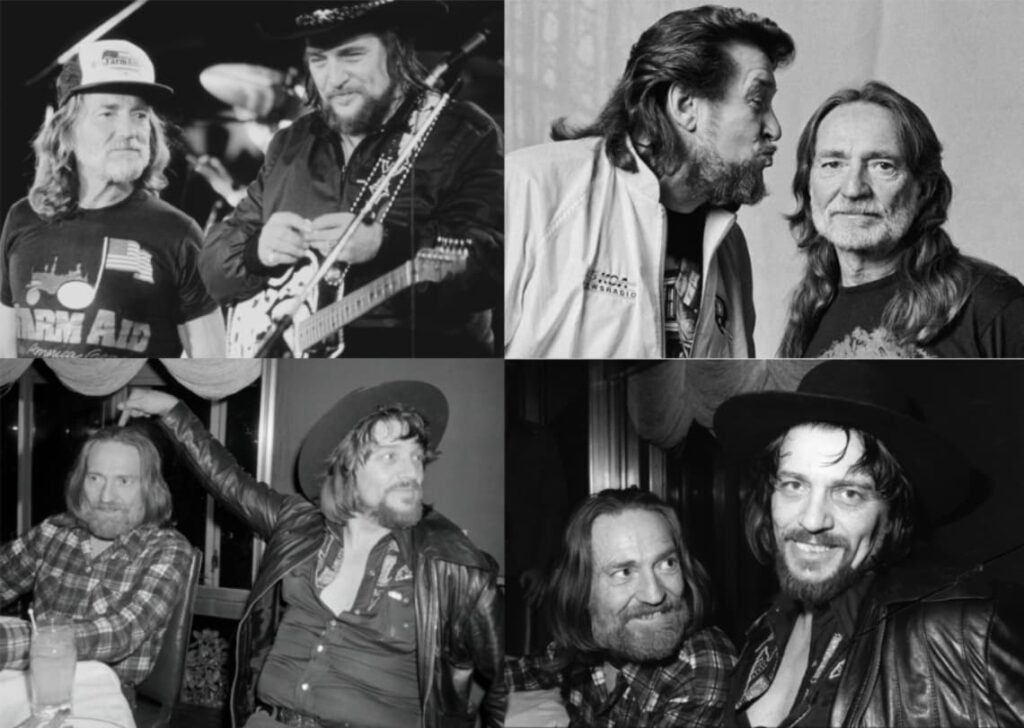
An Ode to a Bygone Era, a Cautionary Tale for a New Generation
In the vast and sprawling soundscape of country music, certain songs don’t just echo; they resonate through generations, carrying with them the dust of honky-tonks, the solitude of the open road, and the bittersweet ache of a mother’s love. One such indelible masterpiece is “Mammas Don’t Let Your Babies Grow up to Be Cowboys,” a track that has become as much a part of the American fabric as a well-worn pair of boots. This wasn’t just a hit; it was a cultural phenomenon, a poignant ballad that captured the very essence of the outlaw country movement and the romanticized, yet often tragic, figure of the cowboy. The song was a defining moment for two titans of the genre, Waylon Jennings and Willie Nelson, and its journey to the top of the charts is a story of creative synergy, a shared vision, and a little bit of good-natured rivalry.
Originally penned by Ed Bruce and Patsy Bruce, the song was first released by Ed Bruce in 1975. While his version had a certain raw charm, it was the 1978 duet by Waylon Jennings and Willie Nelson that truly catapulted it into the stratosphere. Their rendition, a track on their collaborative album “Waylon & Willie,” was more than just a cover; it was a reinterpretation. The two artists, with their distinct but complementary styles, brought a gravitas and world-weary wisdom to the lyrics that resonated deeply with listeners. The song climbed the Billboard Hot Country Singles chart, a steady and deliberate ascent that mirrored the slow, loping gait of a cowboy on horseback. It ultimately reached the coveted No. 1 position on March 18, 1978, where it held its ground for four consecutive weeks, cementing its status as an anthem for the era. The album itself, “Waylon & Willie,” was equally successful, topping the country albums chart and ultimately achieving multi-platinum status.
The story behind this iconic recording is as rich and layered as the song itself. Waylon Jennings and Willie Nelson were not just collaborators; they were friends and contemporaries who had forged a new path for country music, one that rebelled against the polished Nashville sound and embraced a more authentic, gritty aesthetic. They were the architects of the outlaw country movement, and “Mammas Don’t Let Your Babies Grow up to Be Cowboys” was its perfect soundtrack. The recording session itself was a testament to their easy camaraderie and shared musical instincts. The two legends, with their distinctive baritones—Jennings‘s a gravelly growl and Nelson‘s a smooth, melancholic wail—traded verses, their voices intertwining like a couple of old friends sharing a beer and a sad story. The arrangement was sparse and powerful, with a simple drum beat, a crying steel guitar, and a lonesome harmonica, each element working in harmony to create a sense of vast, empty space—the very space a cowboy calls home.
But beyond the chart success and the compelling backstory lies the heart of the song: its meaning. The lyrics, a heartfelt plea from a mother’s perspective, are a cautionary tale about the romanticized but often harsh reality of the cowboy life. It’s not a condemnation of cowboys themselves, but a lament for the loneliness and impermanence that come with the territory. The song paints a vivid picture of a life lived on the fringes—drifting from town to town, chasing a dream that often ends in heartache and solitude. The cowboy, in this context, isn’t just a rugged figure on a horse; he’s a symbol of a man who is forever “alone, even with his friends.” The chorus, with its unforgettable refrain, “Mammas don’t let your babies grow up to be cowboys / Don’t let ’em play guitars and drive old trucks,” is a plea for a different kind of life—one with roots, stability, and the simple comforts of home. It’s a song that speaks to the eternal struggle between the call of the wild and the yearning for a settled life, a universal theme that continues to resonate with anyone who has ever felt the pull of a restless spirit. It’s a song that evokes a time when men were rugged, and the music was raw, a time that we can now look back on with a mix of reverence and a little bit of wistful sadness.